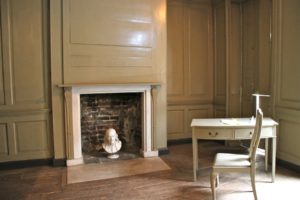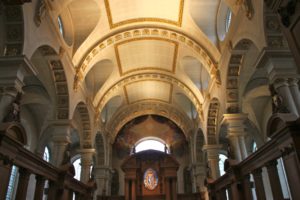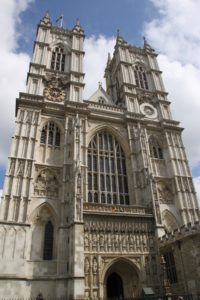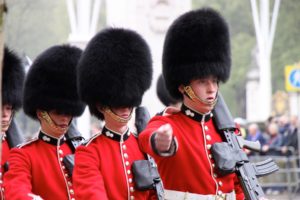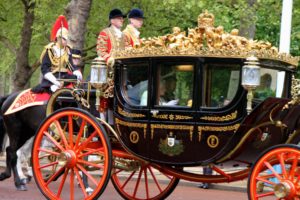The following is a blog I wrote for another site in 2012. Except for the sighting of the queen, which I could not have planned, everything in the narrative below remains valid for a visitor today.
# # #
I went to London to visit friends, but I cannot be underfoot at a host’s home all day every day.
So, for variety in my London experiences, I planned a few sightseeing excursions that generally wouldn’t float to the top of anyone’s must-see list. Most of my choices had American themes.
• The Benjamin Franklin House on Craven Street behind the Charing Cross railway station is the only extant building where American statesman and inventor Benjamin Franklin lived. No U.S. residence has survived, but Franklin lived in the London house for 16 years over an 18-year period before the American Revolution.
In 2001, I visited this site, but there was nothing much to show except the building itself, a Georgian structure typical for its early 18th century origins.
It has been restored and now offers the Benjamin Franklin House Historical Experience. The experience is available five times from noon to 4:15 on Wednesdays to Sundays.
When I visited, the program involved one on-site costumed reenactor playing the daughter of Franklin’s landlady, with voiceovers for Franklin and the landlady. The aim was to tell the Franklin story in his words with various themes, and appropriate visuals, attached to each room. There was very little furniture in the rooms.
Franklin was involved in so many things (as a scientist, philosopher, writer, postmaster, as well as diplomat) and so much occurred to shape American history in his life that it helps to be somewhat acquainted with the history to follow these presentations.
• My next goal was a small Christopher Wren church called St. Bride’s.
Because it is just off Fleet Street, it is called the journalists’ church, and it is full of little plaques commemorating specific deceased journalists, or plaques placed by journalism organizations or various publications, seemingly mostly print media.
Although I felt a connection to the journalism traditions here, I had come because of a quirky little feature that few know about.
I refer to a small sculpture of a child’s head meant to represent Virginia Dare, the first baby born to English parents in the New World (1587 in Roanoke, N.C.).
She with her family disappeared soon after along with everyone else in the settlement. The plaque under this sculpture did not mention that. She is remembered because her parents were married in St. Bride’s.
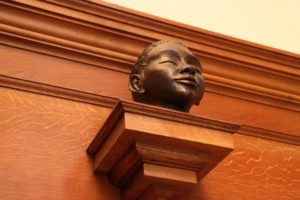
Sculpture meant to represent Virginia Dare, the first baby born to English parents in the New World, seen in St. Bride’s Church.
This church, which is pretty inside, is an almost-total reconstruction because Nazi bombs destroyed the previous church in 1940. This allowed archaeologists to see what was under the church, including foundations of previous churches and even a Roman walkway.
• At Trafalgar Square, I found the statue of George Washington that stands in front of the National Gallery.

Statue of George Washington, which stands in front of the National Gallery on London’s Trafalgar Square.
I had read that the statue was placed on imported American soil because Washington had said he would never set foot in London again. However, he was never in London so there was no question of going again, and the gallery has no evidence supporting a claim for imported U.S. soil.
The statue, a replica of a statue in the Richmond, Va., capitol building, was the state’s gift to the U.K. on the 300th anniversary of the 1621 founding of the Commonwealth of Virginia.
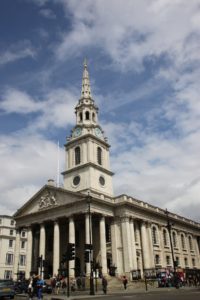
A considerably better-known attraction on London’s Trafalgar Square, St. Marin in the Fields Church.
• I walked west to 3 St. James’s Street, the site of the former embassy for Texas, briefly an independent country. The entrance to the embassy was via an alley that runs from St. James’s Street to a square at the back.
The building at No. 3 is still occupied by the wine merchant Berry Bros & Rudd, which had been the Texans’ landlord.
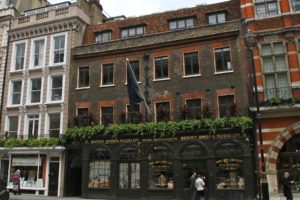
The wine shop that was the site of the Texas embassy, which operated in the early 1840s before Texas became a U.S. state. The embassy was behind the storefront, accessible via the darkened doorway to the left of the wine shop’s windows.
• I watched the queen ride in a horse-drawn carriage from Buckingham Palace toward Parliament where she presided at the opening of a new session of Parliament.
Seeing Queen Elizabeth was dumb luck, something that did not happen in the 19 months I lived in London in the 1990s.
While photographing Westminster Abbey and Parliament under sunny skies (rare during this trip), I learned from a bobby that the queen would make that journey the following day.
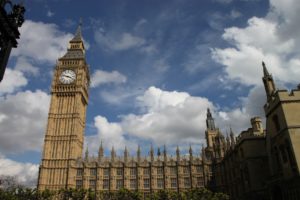
Britain’s Parliament and its attached clock tower. Big Ben is the name of the 13-ton bell inside this tower. Hence, no one on the street ever really sees Big Ben — not even in great sunlight!
The next morning, I arrived — with an hour to spare — at the Mall, the broad roadway the queen would be using.
I stood at a barrier, as did everyone else. The crowds were only one-person deep. I also had fortuitously positioned myself on the side of the Mall closest to where the queen sat in her carriage.
Activities opened with horsemen, a marching band and then marching armed guards, the latter in bright red uniforms and high black furry hats. The red-jacketed men assumed their security posts, positioning themselves every few yards along the entire route.
Next up was the fully escorted carriage carrying the crown.
Then, promptly at 11 a.m., the queen’s carriage left the palace; she traveled past us at a pretty good clip, too. Apparently, Prince Philip was in the carriage, as well, though I could not tell.
The woman standing next to me said her husband was one of the men on the first carriage. She identified Princess Anne as the woman in one of two open-topped carriages that followed the queen.
Then, this event was suddenly over, in good time for me to make my flight that afternoon.
For more about London, we offer at BestTripChoices.com the following, under the headline: A great walking city
https://besttripchoices.com/international-cities/london-england/
This blog and photos are by Nadine Godwin, BestTripChoices.com editorial director and contributor to the trade newspaper, Travel Weekly. She also is the author of “Travia: The Ultimate Book of Travel Trivia.”

